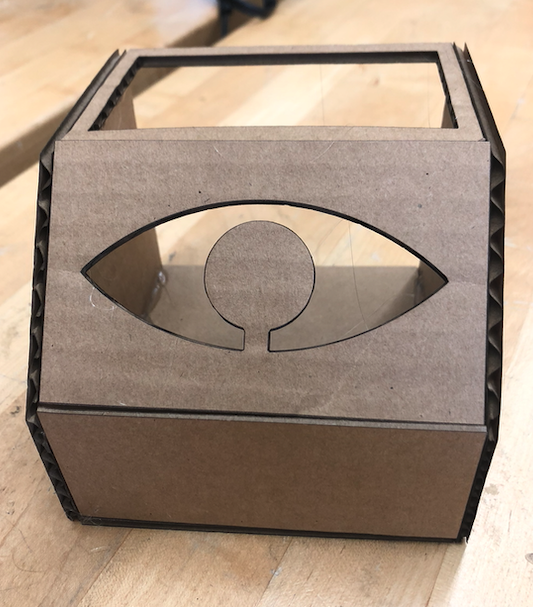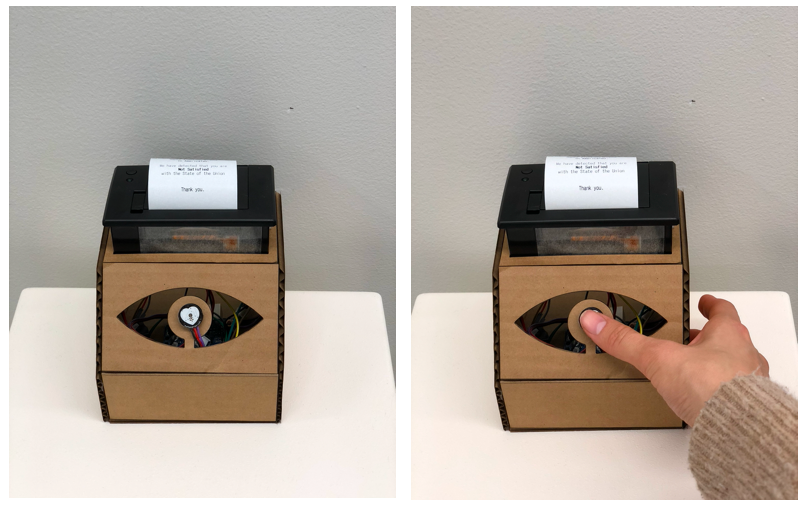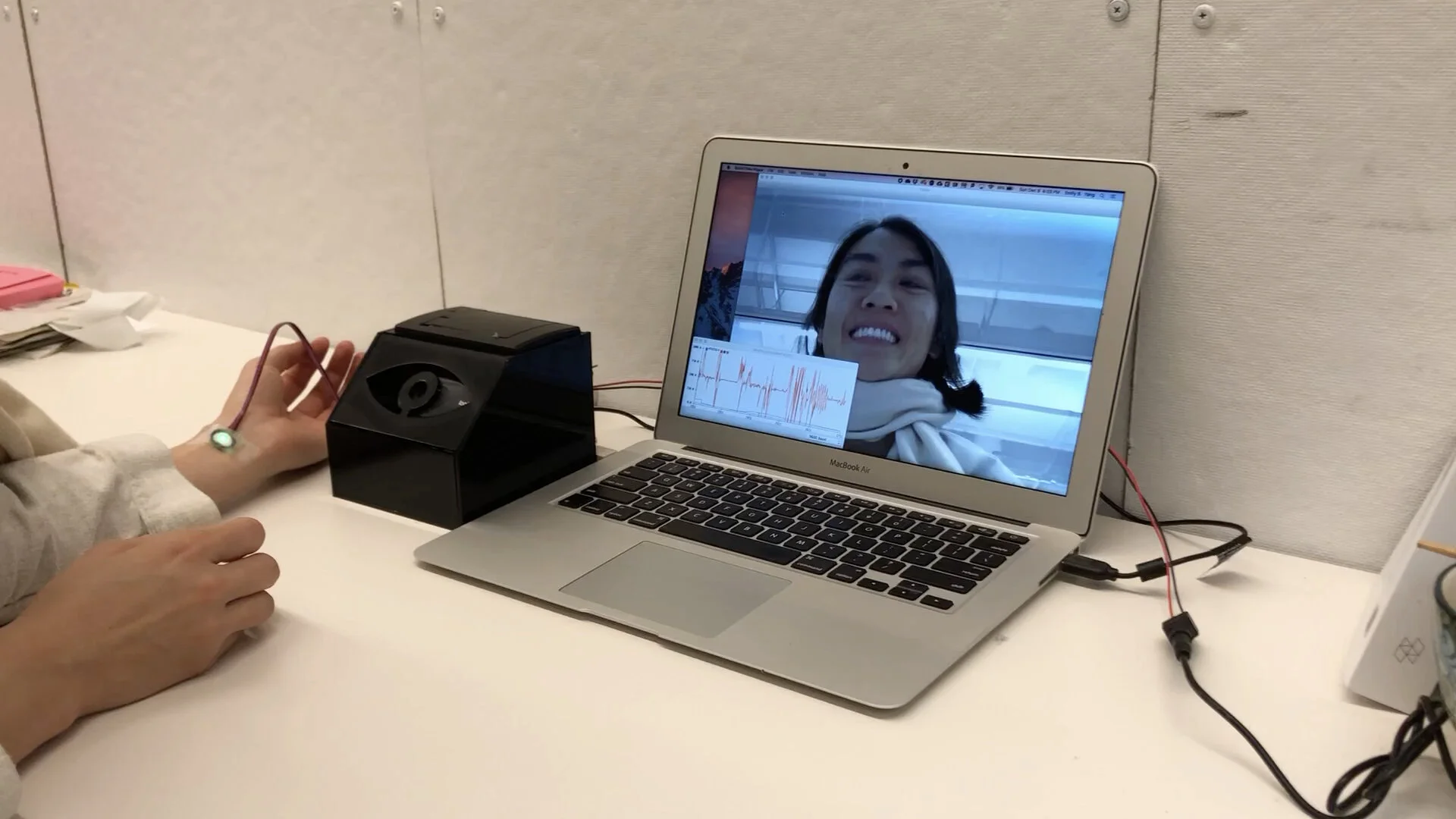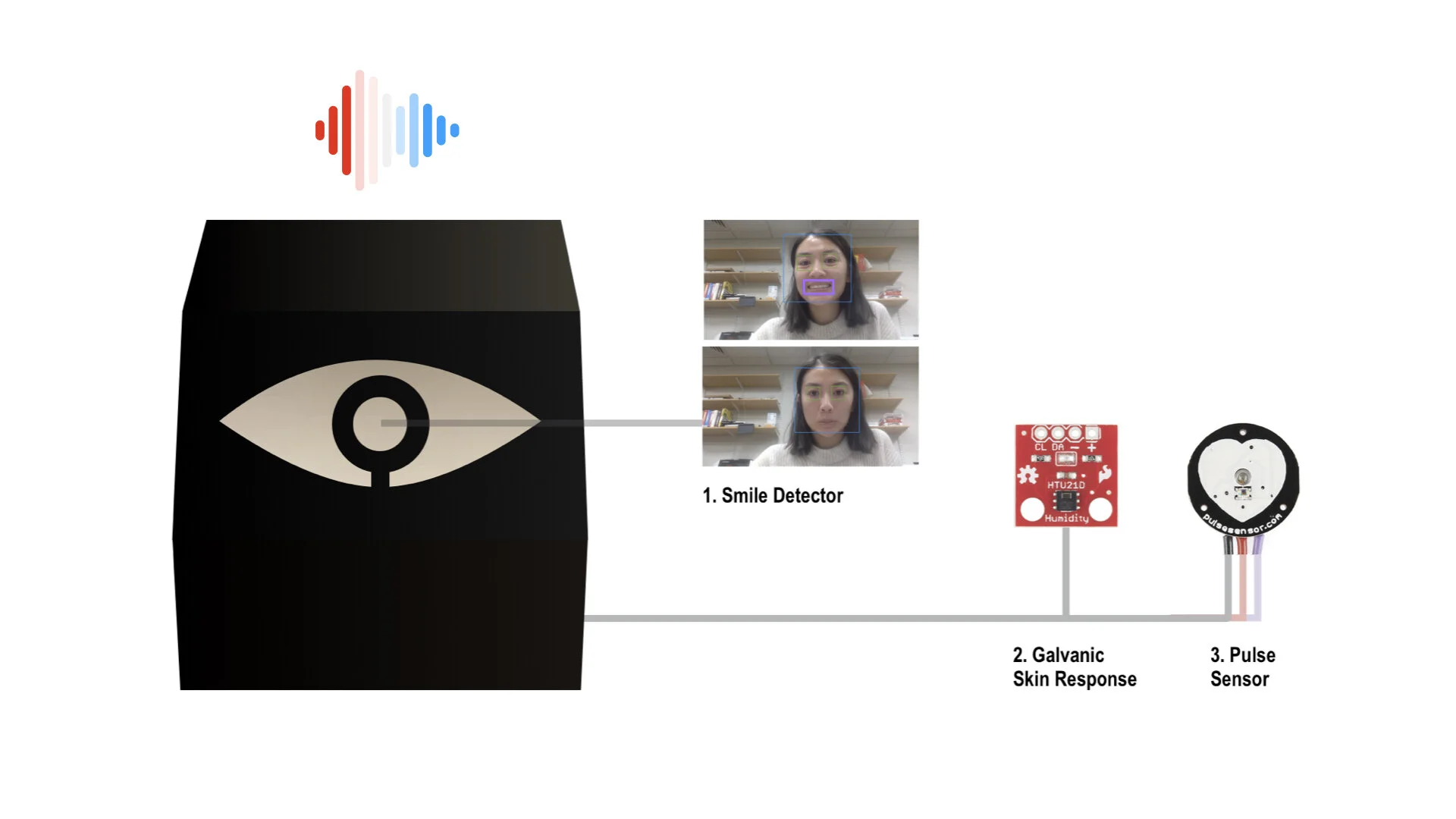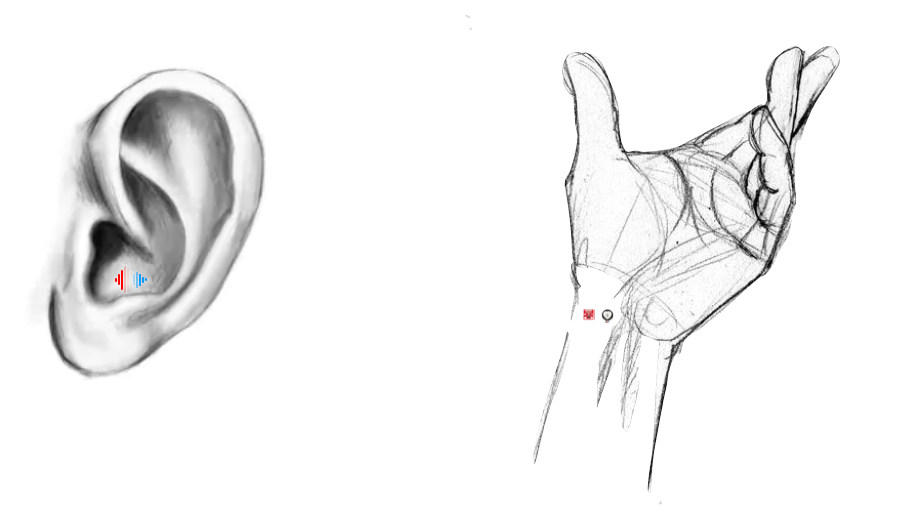Emote-A-Vote:
Personal Sentiment Detecting “Voting Machines” for an E-Government
2019, MIT Media Lab
Project Type: Data Science, Prototyping, Body Sensors, Speculative Design, Design Fiction, Science Fiction
“Emote-A-Vote” Voting Machine
CONTEXT
The voting system in American is antiquated. The rise of surveillance and artificial intelligence could have the potential to radically transform voting. While we gain the ability to express our opinions, we invite invasive surveillance technologies into our homes. This design futures project uses design a provocation; to propose questions such as:
The tradeoffs between privacy and convenience are constantly changing. What conditions would make this device plausible?
This device was intentionally designed to look like a “black box.” Does your interaction with this device remind you of anything that already exists?
This project was completed as the final individual project for MIT Media Lab’s Science Fiction-Inspired Prototyping in the fall semester of 2019. In this project, I laser cut an acrylic design for the shell. To make the device work, I used OpenCV (Python) and Arduino to create a sensor suite to detect and print a vote using an Arduino-compatible thermal printer.
WORLDBUILDING for americaTWO
In the world-building exercise used to imagine AmericaTwo, the second iteration of America’s government, I examined trends in present day America. I imagined what the world could look like over time, should those trends remain constant.
The rise of misinformation, political polarization and mutual distrust among Americans has created a world where privacy has been discarded in favor of truth.
The government has been replaced by a digital government that makes decisions based on daily referendums from Americans.
In 2069, sentiment is calculated for a minute each day to generate a “vote.”
Below are a series of posters I designed to further illustrate the world of America in 2069.
Privacy: No privacy means having privacy all the time
Governance: Algorithms keep America freer and fairer than ever before
Environment: It’s a free country. You are welcome to live wherever you want. But only in these areas.
Mortality: Never say goodbye again: visit your great-grandparents anytime
World TIMELINE
Design process
Early storyboard for how the device could work
Early form, laser cut
EARLY PROTOTYPING
An early form of the election minute voting machine.
The design of the eye is referential and highlights the provocative elements of the device.
The device collects a pulse and uses it to determine if the user feels “satisfied” or “not satisfied” with the state of the union, and prints a receipt of the response.
Sensor is placed on the center of the eye. User places thumb on the sensor for pulse to be collected.
iterative prototyping
After another round of prototyping, I added additional sensors to collect a more accurate user sentiment. In the current prototype, I collect:
Screenshot from OpenCV: Purple square appears when smile is detected.
Facial Happiness Detection using OpenCV:
Computer vision to detect a face, and then to detect if the face is smiling or not. Purple square appears when smile is detected.
Screenshot from Arduino Plotter: Example of pulse and galvanic skin response detection before and during when the question, “should universal basic income be increased” is asked.
Galvanic Skin Response:
This sensor can determine if the user is sweating. This can indicated if a user is excited.
Pulse using pulse sensor:
Pulse detection allows for the user’s pulse to be detected. By setting a threshold for the pulse based on the facial happiness and galvanic skin response, I can determine the user’s sentiment.
Live feedback form the sensors.
USER STORY
When a citizen turns 18, they receive this device and are expected to report to it every day.
User is resting at home. For a random minute each day, the user is called to their voting device when the National Anthem begins to play. If they do not report, they do not receive their daily universal basic income.
During the anthem, user places their hand over their heart and listens to the anthem, as they have done every previous day of their life in America_Two. The device collects their baseline.
A question is proposed. For example, “should Universal Basic Income be increased?”
A response is collected based on the 3 sensors in the machine.
A hologram appears to show the result of the day’s referendum.
Participating users receive their universal basic income, and are free to go about their day.
How it works
Current prototype diagram.
The user hears the summon to the voting device every day. The sound of the National Anthem serves as a way to collect the user’s baseline state. When a question is proposed, the change in their sentiment is their response to the vote.
In my current prototype, I have speakers, a smile detector [using external webcam linked to my computer], galvanic skin response and a pulse sensor.
However, in the future, I would expect for sensors to be implanted in the human body so that the individual can hear when they are being summoned to vote, and respond privately with sensors that are acutely attuned to their body.
Imagined embedded sensors on the human body in the ear and wrist.
Conclusion
“Where typical design takes a look at small issues, speculative design broadens the scope and tries to tackle the biggest issues in society.”
- Anthony Dunne
As a designer, I strive to fight for an inclusive future that respects privacy and surveillance is an issue I feel strongly about. A speculative approach to a large and complex problem in an uncertain world is effective because it provokes thought and conversation and hopefully, steers the world works a more preferable fturue.









